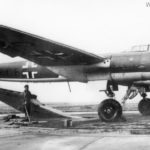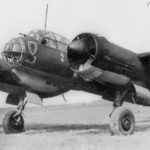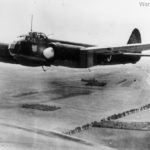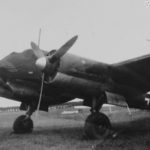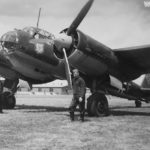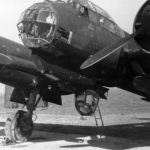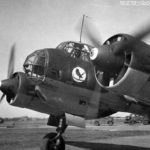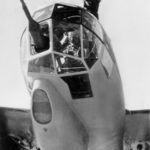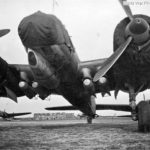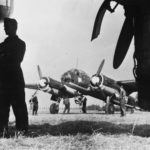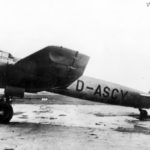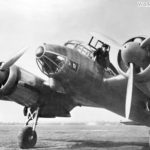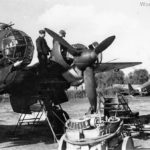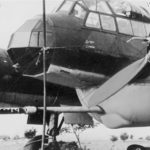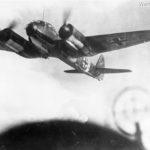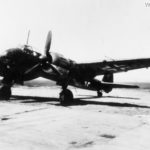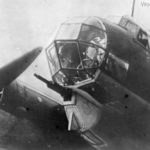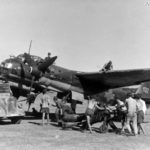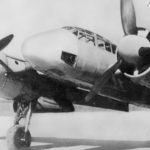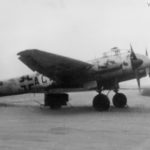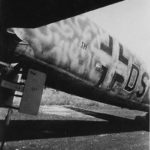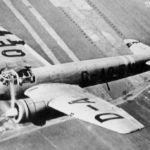Ju 88 of the USAAF in flight
Hungarian Ju88
Ju88 and Renault UE Chenillette
Ju 88A-1
Ju88 of the KG77, winter
Ju 88A-4 dorsal MG 81s
Ju 88A-5 of the KG 51 “Edelweiss”
Ju 88A-5 coded 4D+DC of the KG30
Ju 88 A-1/U16
Fighter Ju 88 C-6 of the 7/KG 51
Ju 88A-4 of the KG51 in flight
Ju 88V-8 WL+008
Ju 88 2
Ju 88 G-1 3C+FK of the 2/NJG 4 in Parndorf Winter 44/45 2
Ju 88 of the KG 51
Long-range photo-reconnaissance Ju 88D-2 with two 900 liter tanks
Ju 88P-1 with 75mm PaK 40 cannon
Night fighter Ju 88G-1
Ju 88 5
Ju 88A-17 MTO 1943/44
Ju 88 A of the Stab II/KG 3 at Oldenburg May 1941
Ju 88A-4 with 20 mm MG FF
Ju 88 C-6 9H+SL of the Nahaufklarungsstaffel Kroatien
Ju 88G-6 night fighter
Ju 88A from 7/KG 30 with victory markings on stabilizer
Bomber Ju 88A-4 warming up its engines
Ju 88R-2 of the NJG 1 antenna removed
Ju 88G-1 4R+UR of the 7/NJG2
Ju88 with bombs
Ju 88 of the KG51
Ju 88Z-19
Ju 88 of the KG 26 with torpedoes
Captured Ju88 1945
Ju 88C-1 of the NJG 2
Ju 88A-15 with enlarged wooden bomb bay
Ju88 night fighters parked at Grove airfield Denmark 1945
Ju 88V-6 D-ASCY
Ju 88V-3 D-AREN
Ju 88A of the KG30 being serviced by ground crew, 1942
Ju88 4R-DR
Ju 88P-4 with 50 mm Bordkanone BK 5 cannon in ventral gun pod
Ju 88A-4 coded M7+CK of the KGr 806
Ju 88 A-6/U with FuG 200 Hohentwiel
Captured Ju 88D-1 trop at Wright Field
Ju 88 Nachtjager 2
Ju 88 G-1 3C+FK from 2/NJG 4 in Parndorf Winter 44/45
German Airmen, SC1000 bombs and Ju 88 of X Fliegerkorps in Sicily 1941
High-speed bomber Ju 88S-1
Ju 88P-2 with twin 37 mm Bordkanone BK 37 cannon in ventral gun pod
Ju 88 coded L1+HT of the LG1
Ju 88A-14
German Luftwaffe pilot at controls of Ju 88
Junkers Ju 88V-7 GU+AE
Ju 88A-5 with two additional 900 liter tanks
Romanian Ju 88 132
Ju 88V-5 D-ATYU
Ju 88 1945
Ju 88 C-6 of the 7/KG 51
Ju 88 Nachtjager
Ju 88G-6 +AC fitted with FuG 220 SN-2 radar
Ju 88 coded 1H+DS from KG 26
Ju 88 A from I/LG 1
Ju 88V-1 D-AQEN
Long-range fighter Ju 88H-2
Photo-reconnaissance Ju 88T-1 4U+MK of the 2.(F)/123
Ju 88 F6+DN of the 5/Aufklarungsgruppe 122 in Russia
Junkers Ju88 was a German twin-engined multirole combat aircraft. Plane became one of the Luftwaffe’s most important aircraft and were built in dozens of variants.
Design and Structure
- Wings: Low-wing cantilever monoplane design. The wings have a constant taper in thickness, with the inner section between the fuselage and engine nacelles having a nearly constant chord, while the outer sections feature a double taper. The structure is an all-metal two-spar construction with flush-riveted stressed-skin covering. The entire trailing edge is hinged, with outer sections serving as ailerons and inner sections as landing flaps. The aircraft is equipped with slatted diving brakes under the front spar outboard of the engine nacelles and features hot-air leading-edge de-icing.
- Fuselage: Oval metal monocoque structure built from “Z”-section frames and top hat-section stringers, with smooth, stress-bearing skin riveted on.
- Tail Unit: Cantilever monoplane type with all-metal framework, metal-covered fixed surfaces, and fabric-covered elevators and rudder. It also includes rubber pulsating overshoe-type de-icers on the tailplane leading edges.
- Landing Gear: Retractable type with wheels retracting backward and rotating 90 degrees to lie flat in the engine nacelles. The aircraft has a fixed tail-wheel.
Power Plant
- Engines: Two Junkers Jumo 211 J twelve-cylinder inverted Vee liquid-cooled engines, housed in circular nacelles with frontal radiators that incorporate both water and oil-cooling elements. The aircraft has controllable gills aft of the radiators.
- Fuel System: The aircraft is equipped with five main fuel tanks: two 72-gallon (324 liters) tanks inboard of the engine nacelles, two 90-gallon (405 liters) tanks outboard of the nacelles, and a 250-gallon (1,125 liters) tank in the fuselage. There is provision for an additional 152-gallon (690 liters) tank in the after bomb bay. All tanks are fiber-encased in rubber and equipped with solenoid-operated air-pressure valves for jettisoning contents. The engines drive VDM or Junkers controllable-pitch, full-feathering airscrews with de-icing slinger rings.
Accommodation
- Crew: The aircraft accommodates four crew members: the pilot, bomb-aimer, upper rear gunner, and radio operator. The crew is positioned closely together in the forward part of the fuselage. The cockpit features a fully glazed nose with optically-flat continuous transparent hooding, providing excellent visibility for the crew. All crew positions are armored.
Armament and Bomb Load
- Guns: Armed with a 7.9 mm MG 81 operated by the pilot, one or two MG 81s in the nose, a 7.9 mm MG 81 or 13 mm MG 131 in the upper rear position, and a twin MG 81 in the lower rear position. The aircraft can carry bombs or torpedoes on external carriers under each wing and within the fuselage.
- Bomb Load: Capable of carrying various bomb configurations, including four 250 kg bombs under the wings or one 1,000 kg bomb or torpedo under each wing root. The fuselage can carry ten 50-kg bombs or incendiary bomb containers. The maximum external bomb load is 6,600 lbs (3,000 kg).
Dimensions and Weight
- Dimensions: Span of 65 ft. 10 in. (20 m), length of 47 ft. 1 in. (14.4 m), height of 15 ft. 11 in. (4.8 m), and wing area of 590 sq. ft. (54.5 sq. m).
- Weights: Normal loaded weight of 26,700 lbs (12,122 kg) and a maximum take-off weight of 31,000 lbs (14,075 kg).
Performance
- Speed: Maximum speed of 295 mph (472 km/h) at 17,500 ft (5,340 m).
- Climb and Ceiling: Can climb to 17,500 ft (5,340 m) in 23 minutes, with a service ceiling of 27,000 ft (8,235 m).
- Range: Maximum range of 1,900 miles (3,040 km) with full fuel, and 650 miles (1,040 km) with maximum bomb load.



